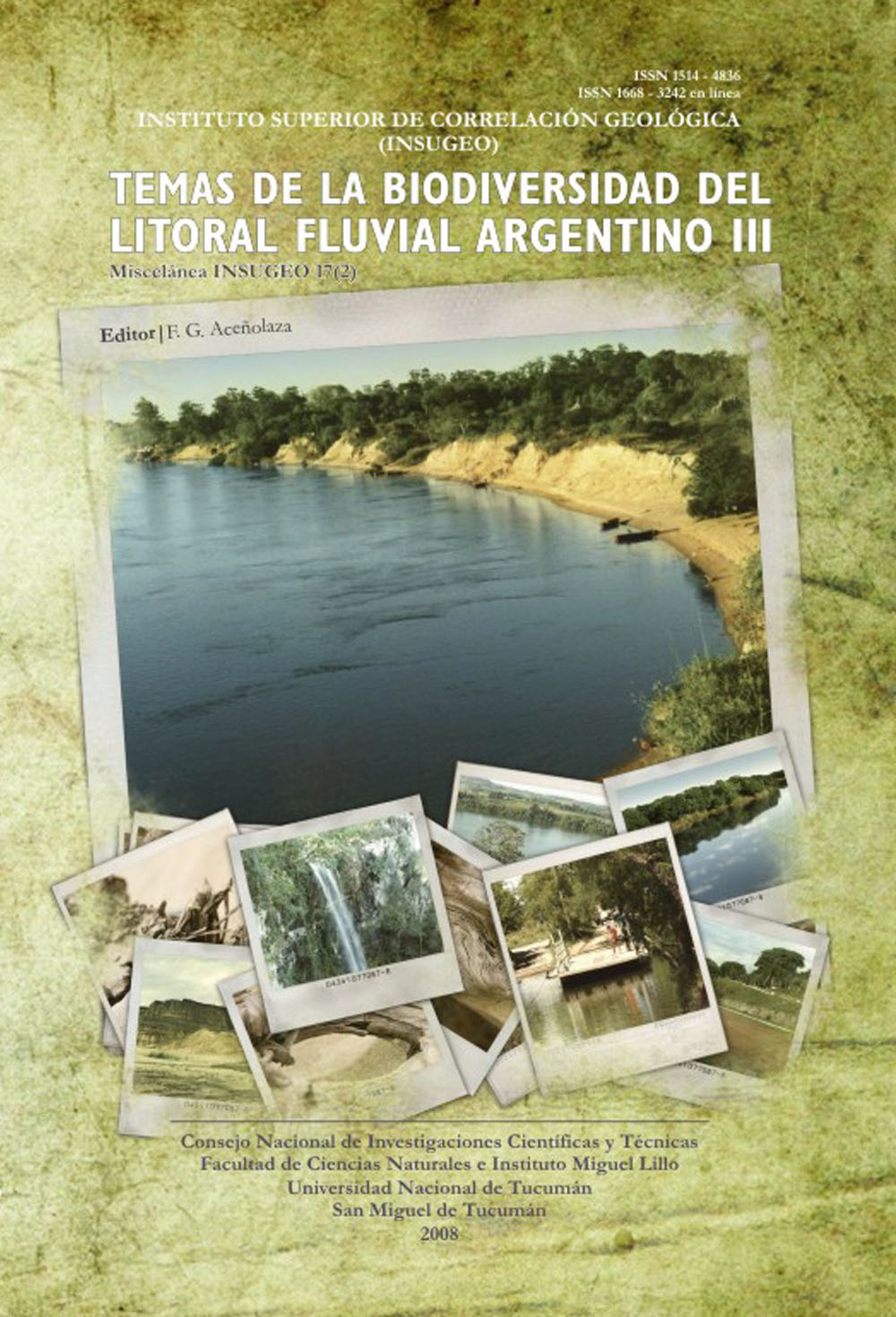Miscelánea 17 (2)
Vegetación y Diversidad de Ambientes en la Reserva Natural Isla Apipé Grande, Provincia de Corrientes, Argentina
Descargar trabajo en formato PDFResumen
VEGETACIÓN Y DIVERSIDAD DE AMBIENTES EN LA RESERVA NATURAL ISLA APIPÉ GRANDE, PROVINCIA DE CORRIENTES, ARGENTINA.- La Isla Apipé Grande integra el sistema de reservas de la Provincia de Corrientes. Ubicada en el nordeste provincial, fue declarada reserva en 1994, como parte del plan de mitigación de las obras del complejo hidroeléctrico de Yacyretá.
Este trabajo adelanta los primeros resultados de estudios sobre la vegetación de la isla, con la descripción de comunidades y su comparación con unidades de regiones vecinas.
La reserva se encuentra ubicada en una zona de transición entre las provincias fitogeográficas Paranaense y Chaqueña.
Dominada por un clima subtropical perhúmedo, en medio del río Paraná, la isla presenta sitios nunca alcanzados por las “inundaciones”.
Veintidós comunidades vegetales higrófilas y mesófilas se distribuyen sobre sus 30.000 ha. Una franja de selva riparia rodea la isla casi por completo. En el interior se suceden pajonales altos, depresiones con cañaverales, viejos madrejones con comunidades acuáticas e isletas de bosque mesófilo sobre lomadas arenosas. La zona inundable reúne comunidades vegetales acuáticas y comunidades vegetales adaptadas al régimen de inundación y sequía alternadas. Unas 700 especies de plantas integran las comunidades, incluyendo algunas citadas por primera vez en territorio argentino.
En las lomadas no inundables se asientan los pobladores con sus cultivos de subsistencia y el ganado vacuno y equino.
La vegetación y la flora de la isla se relacionan con el Distrito de los campos del sur misionero y con comunidades de la zona de los esteros del Iberá (Distrito chaqueño oriental), compartiendo numerosos géneros y especies.
Diversidad de ambientes y de tipos de vegetación hacen de la isla un excelente sitio para la conservación.
Abstract
VEGETATION AND HABITATS DIVERSITY IN THE NATURAL RESERVE ISLA APIPÉ GRANDE, PROVINCE OF CORRIENTES, ARGENTINA.- The Apipé Grande Island is located at the north-east of the Province of Corrientes. It belongs to the natural reserve system of the province, were it was included in 1994, as a part of the mitigation plan due to the construction of the Yacyretá hydroelectric complex. This paper shows the first results of studies on the vegetation of the island, with the descriptions of the communities and comparisons with units of neighboring regions. The reserve is located at a transition zone, between the Paranaense and Chaqueña phytogeographical provinces. Dominated by a subtropical perhumid climate, and situated in the middle of the Paraná river, the island presents sites never reached by the floods. Twenty-two hydrophile and mesophile vegetal communities are distributed on the 30,000 has. of the island. A strip of riparian forest surrounds it almost completely. At the inner region, high tall grasslands, lowlands with reed fields, old oxbow lakes with aquatic communities and mesophile forest islets on sandy hillocks are recognized. The flooding zone reunites aquatic vegetal communities as well as vegetal communities adapted to the alternate flood and drought regime. About 500 plant species integrate those communities, including some of them being mentioned for the first time in Argentine territory. The settlers, with their subsistence cultures and equines, live at the non- flood hillocks. The vegetation and the flora of the island are related to the Fields District of the south of the Misiones Province and to communities of the Iberá Marshlands zone (Eastern Chacoan District), sharing many genera and species. The habitat and vegetation type diversity makes of the island an excellent site for conservation.






